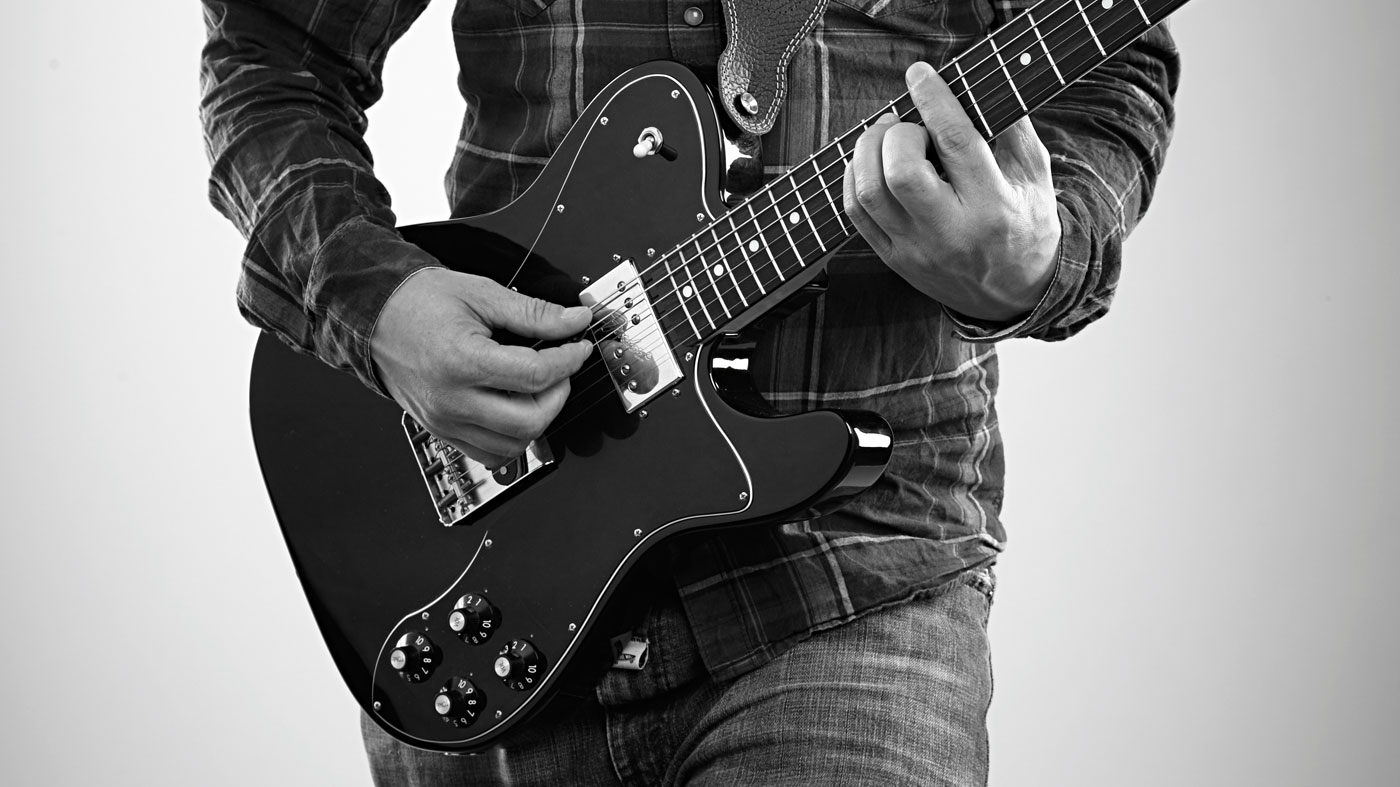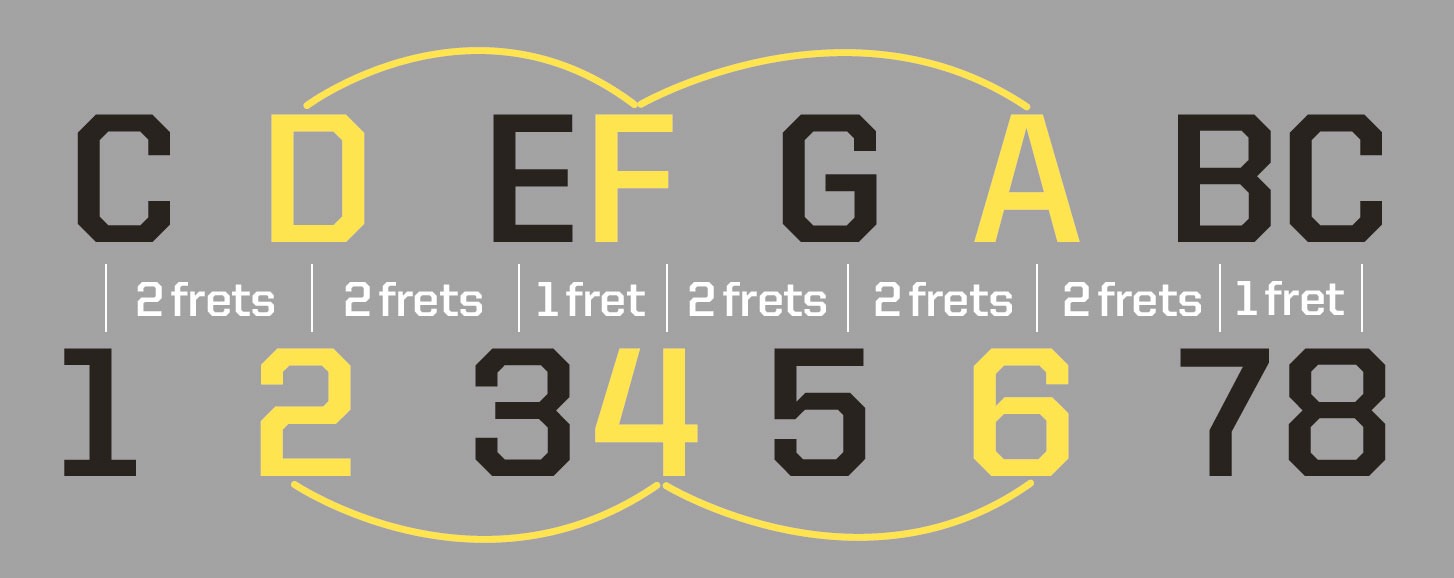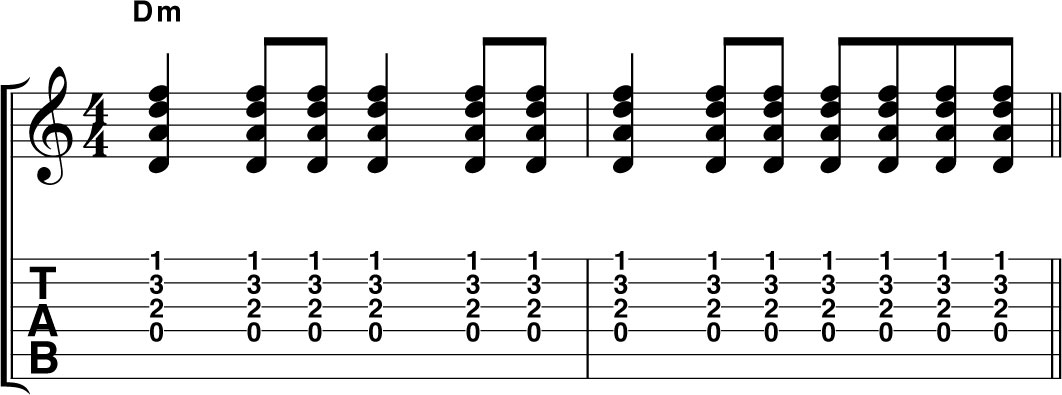Easy guitar theory: diatonic chord progressions
The word ‘diatonic’ simply means ‘within a key’, so a diatonic chord progression is a set of chords made up of notes from within a key signature

Listen up: scales aren’t just torture devices invented by guitar teachers...
When you use a scale, say, C major, you are playing ‘in the key of C’. The word ‘diatonic’ simply means ‘within a key’, so a diatonic chord progression is a set of chords made up of notes from within a key signature. Here we’re looking at the two most common kinds of chord: major and minor.
These two chords are made of 3rd intervals (play a note, skip a note, play a note). There are two types of 3rds: major 3rds (four frets between the notes) and minor 3rds (three frets). The order these two intervals occur in determines the type of chord you’ve constructed. Enough theory, let’s get playing…
1. Building a major chord on the root note

As you might expect, we’re going to start at the scale’s root (C) and add the third (E) and fifth (G) notes. This stack of 3rds gives us the intervals of a major 3rd (C-E) followed by a minor 3rd (E-G), which makes a bright, happy-sounding C major chord.

There are three different notes in a major chord but the guitar allows you to repeat certain notes in different registers. The C shape used here repeats the C and E notes.
2. Building a minor chord on the second note

We’re going to repeat the previous example, but this time starting from the scale’s second note, D. This gives us the notes: D F A. This time the intervals are a minor 3rd (D-F) followed by a major 3rd (F-A), so we have constructed a D minor chord.

Here is a groove using the D minor chord (a mixture of D, F and A notes). Make sure you practise moving between the C and D minor chords as it’ll help you later on.
Want all the hottest music and gear news, reviews, deals, features and more, direct to your inbox? Sign up here.
3. Building a major chord on the fourth note

This process can be used on every note of the major scale. Seeing as we want you to have a nice progression to play, we’re jumping to the scale’s fourth note, F, for our next chord. As you’ve probably worked out, these intervals give us an F major chord.

Now it’s time to put together the three chords you’ve looked at. Our audio track outlines the C and Dm shapes we’ve already looked at before leading into the F chord shown here.
MusicRadar is the number one website for music-makers of all kinds, be they guitarists, drummers, keyboard players, DJs or producers...
- GEAR: We help musicians find the best gear with top-ranking gear round-ups and high-quality, authoritative reviews by a wide team of highly experienced experts.
- TIPS: We also provide tuition, from bite-sized tips to advanced work-outs and guidance from recognised musicians and stars.
- STARS: We talk to musicians and stars about their creative processes, and the nuts and bolts of their gear and technique. We give fans an insight into the craft of music-making that no other music website can.
